Affiliate disclosure: This post may contain affiliate links. Please see our Privacy Policy.
Enoki mushrooms (Flammulina velutipes), also known as enokitake or velvet foot mushrooms, are an incredibly common cold weather mushroom that’s easy to find just about anywhere in the world.
They look a bit different than cultivated enoki mushrooms, since the cultivated version is grown in a special environment to encourage the long delicate stems preferred in Japanese cooking. That’s all cosmetic though, and they taste more or less the same as cultivated enoki.
Be aware that enoki do have deadly toxic look a-likes, and they can only be positively identified with a spore print. Be very careful when harvesting this mushroom in the wild!
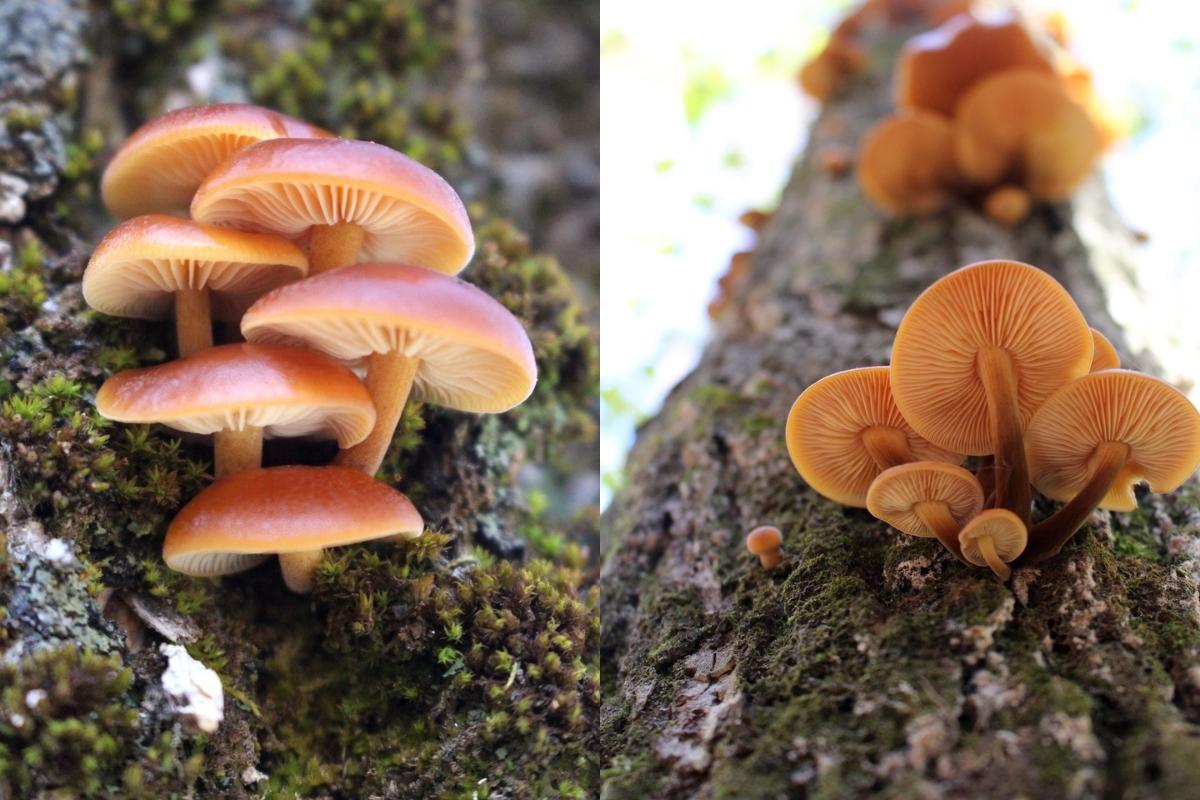
I tend to shy away from writing mushroom foraging guides for the tricky species, the ones with deadly look a-likes.
For practical reasons, I mostly stick with talking about beginner mushrooms, species that are incredibly easy to identify like:
- Chicken of the Woods
- Dryad’s Saddle (Pheasant Back Mushrooms)
- Lion’s Mane Mushrooms
- Puffball Mushrooms
- Shaggy Mane Mushrooms
- Witches Butter
- Chaga Mushrooms
- Birch Polypore
Some others do have deadly look alikes, but they’re pretty easy to tell apart if you’re careful. I still think it’s worth it to forage morel mushrooms and chanterelles because they’re incredibly choice edible species, even though they do take a more careful eye to identify.
That said, the morel “look a-likes” don’t look all that much like morels to my eye. The only way you mistake those is with a hefty dose of foragers optimism that blinds you to the obvious differences.
Wild enoki are different…
Their look alikes really do look almost exactly like them, and if you get it wrong the consequences can be fatal.
Though they’re tricky to identify, wild enoki mushrooms are everywhere, and then tend to attract a lot of attention because they’re available in the winter.
You can see enoki mushrooms coming right out of the snow in spring sometimes, and we’ll see them right up until early January even in Vermont.
A bit further south, in southern new England, you can harvest enoki all winter long.
I see pictures of wild enoki mushrooms on mushroom identification forums all winter long, and they just got a bunch of press because Black Forager did a short video highlighting them on instagram.
Given all the attention they seem to get from foragers, I figure it’s good to devote a bit of time to them (even if they’re not a great choice for beginners).
Still, I can’t stress this enough, with any mushroom, but especially this one…be sure you’re 100% confident in your identification if you intend to eat them.
It’s also totally fine to identify them just for fun, without bringing them home to eat. Bird lovers and naturalists go out into the woods seeking new species all the time, but they don’t feel the need to eat them to enjoy them.
Mushrooms can be appreciated in the same way, and you don’t have to cook them to make finding and identifying wild mushrooms a worthwhile way to spend an afternoon.
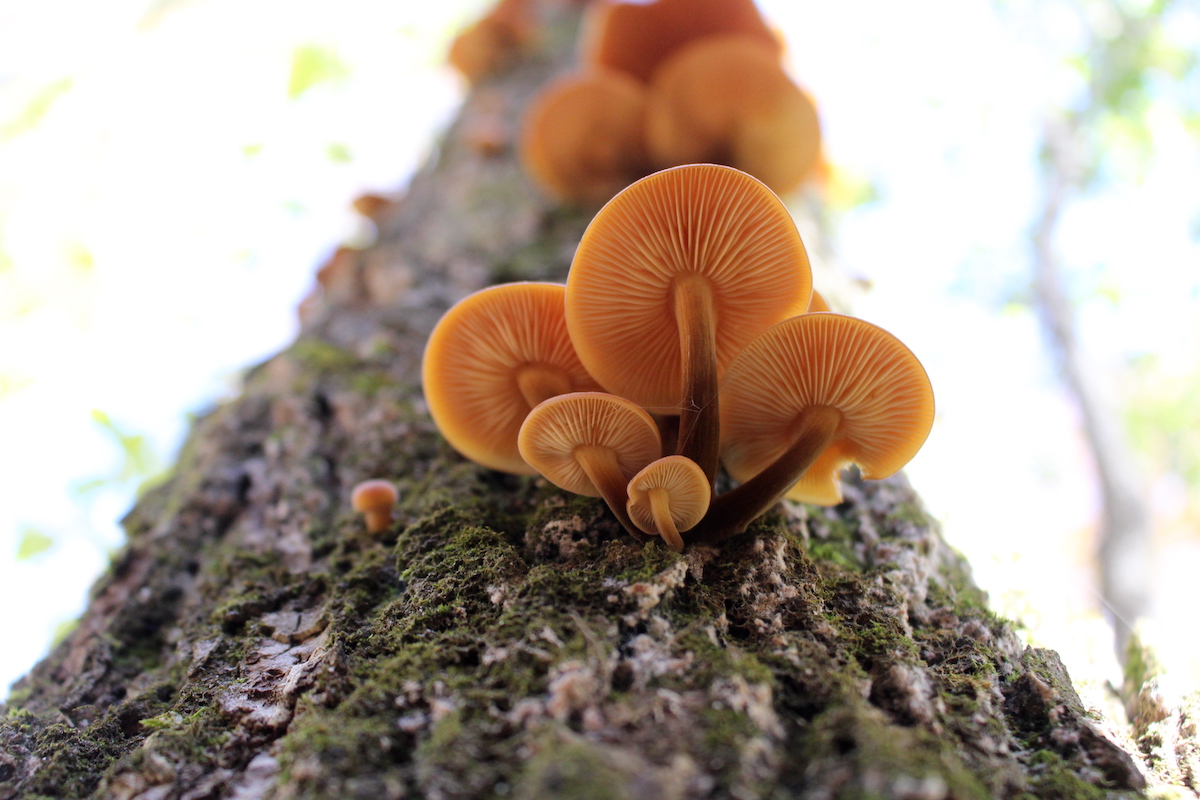
What are Enoki Mushrooms?
Wild enoki are small red/brown mushrooms that grow in clusters from dead wood (decomposer species).
Cultivated enoki are well known in Asian cuisine, and they look very different. They’re grown without light in low oxygen environments, so they develop long spindly stems and small white caps.
The flavor, however, is pretty much the same even though they look nothing alike.
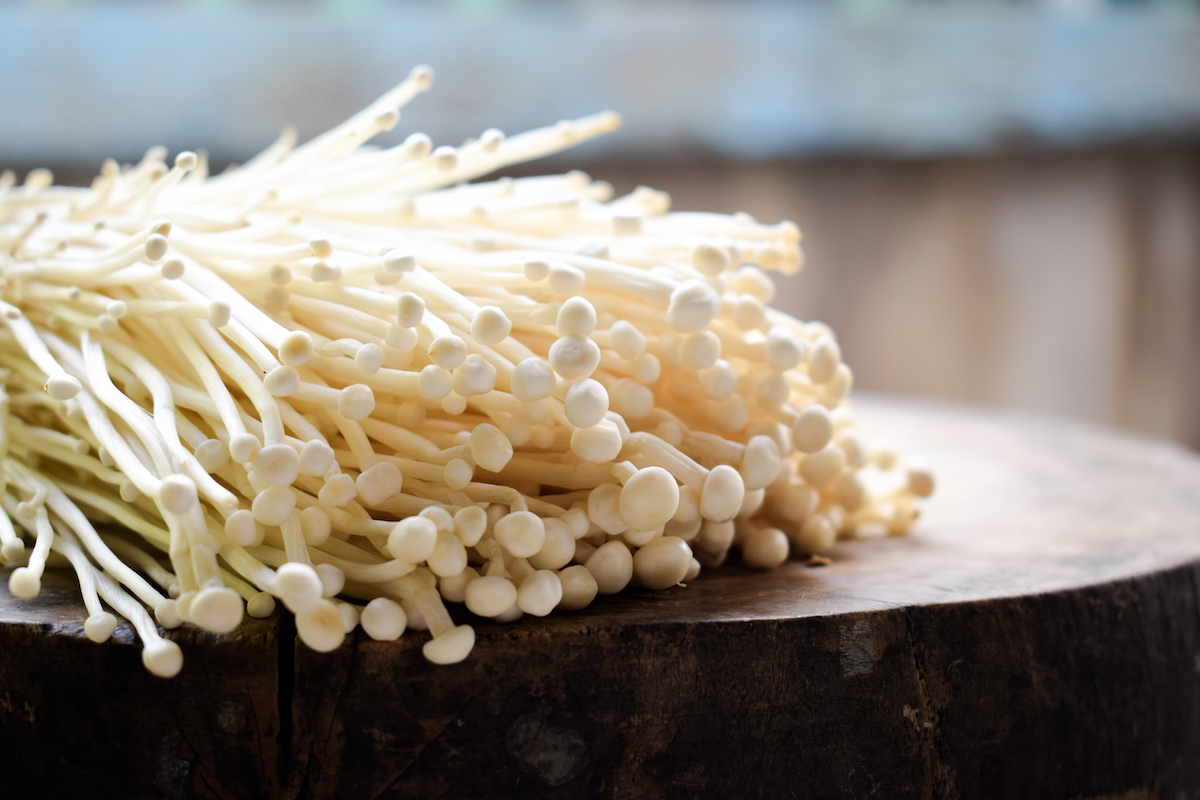
In nature, they generally grow in full sunlight during the cool parts of the year (late fall or early spring), and they’ll even come out mid-winter in milder climates.
The wild version is also known as “velvet foot” or “velvet stem” because of their fuzzy stems.
Looking very closely at the base of the stem in the photo below, you can actually see the really delicate mushroom “velvet.”
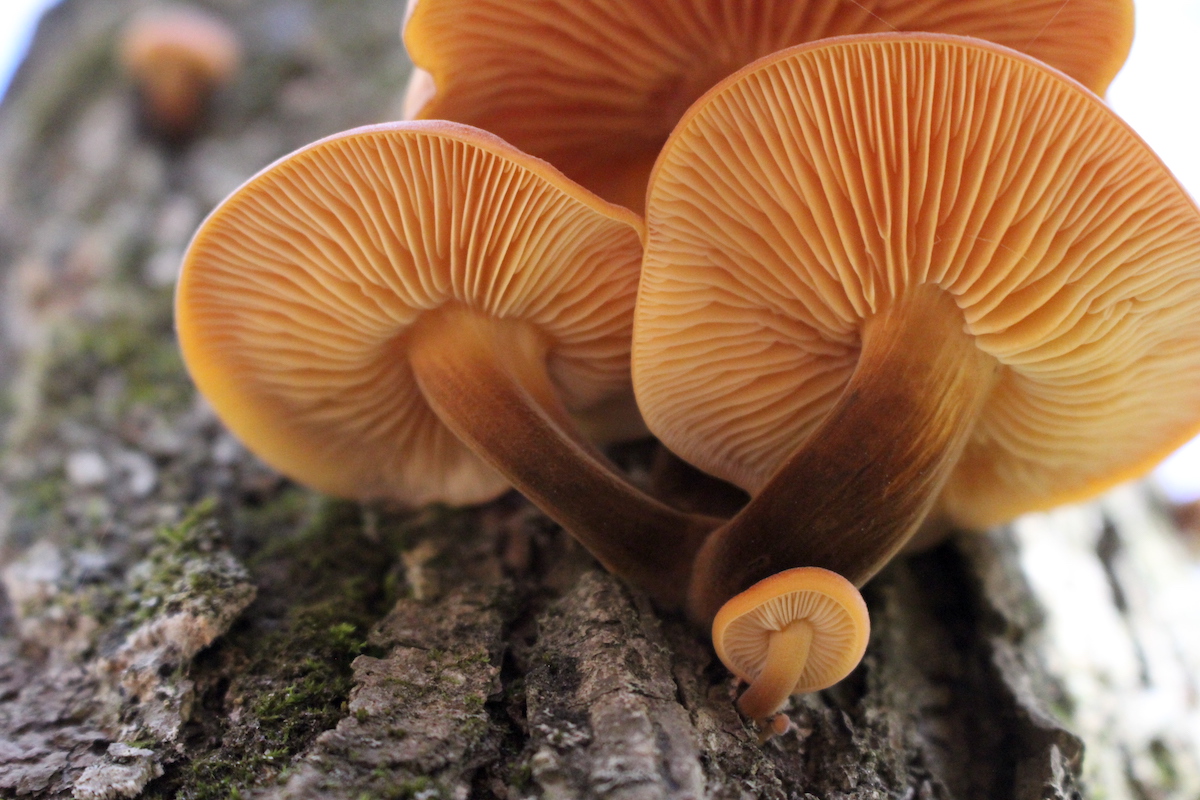
Where and When to Harvest Enoki Mushrooms
Enoki mushrooms are a cold season mushroom, and they’ll sprout very early in the spring (before morels). We find them late in the autumn as well, after other cold season mushrooms like lion’s mane.
In milder climates in Europe and the mid-Atlantic, they thrive all winter long.
Enokitake are a decomposer species, and they grow on dead hardwood trees. Thus far, I’ve only seen them on dead elm trees…but we have a lot of dead elm trees due to all manner of diseases killing them off these days.
They’re also common on willow, and a number of other dead hardwoods.

Identifying Wild Enoki Mushrooms
Enoki are a shiny little brown mushroom, but unfortunately, there are A LOT of little brown mushrooms and some of them are quite toxic.
The first thing you want to look for is a cluster of small-ish mushrooms growing out of dead wood, with a shiny/glossy, almost moist-looking red/brown cap. It’s almost got a “slimy” or “sticky” appearance according to some descriptions, but I think glossy is a better descriptor.
That’s only when fresh, they’ll start to look a bit dull and lose their shine as they age. (You don’t want them at that point anyway, so go with shiny caps.)
It’s generally darkest toward the center, and lightens to a yellow/tan/brown at the edges.
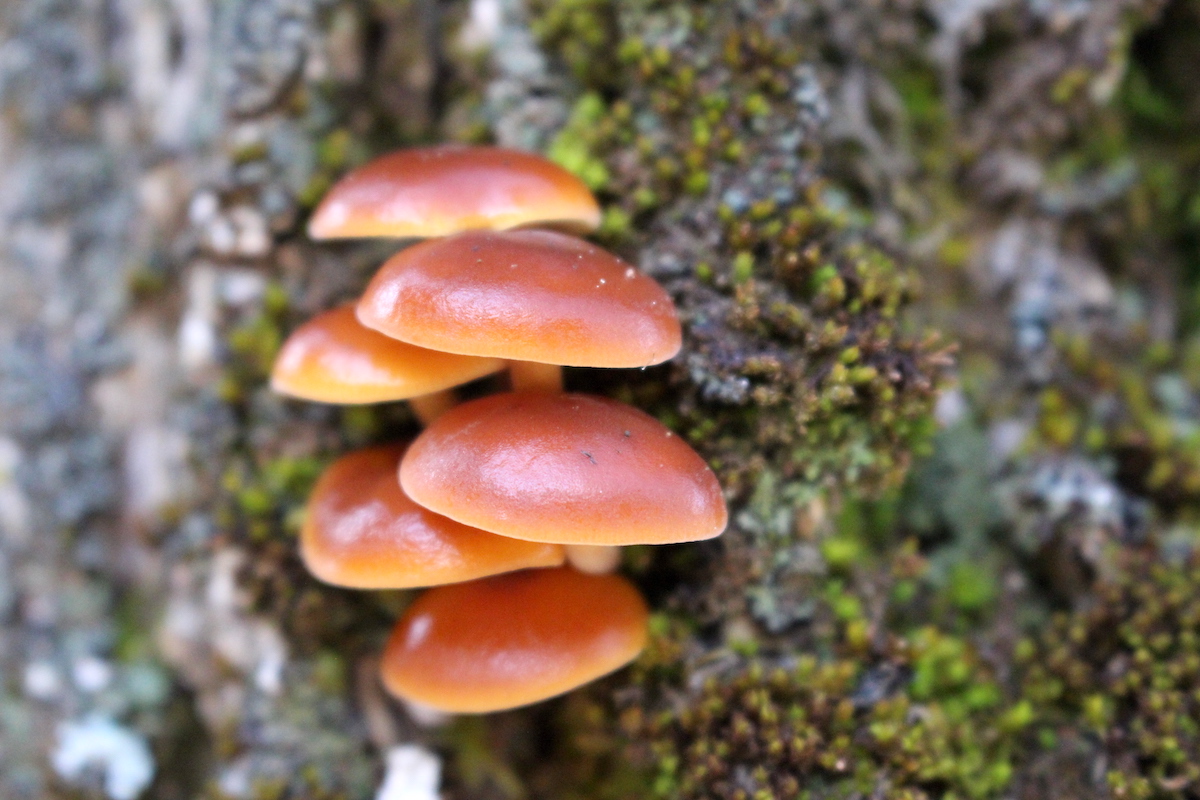
On the underside, enoki has closely spaced gills that are either white or white/yellow. They attach all the way to the top of the stalk.
They’re most “velvet-y” at the base of the stalk, and often have a dark brown color that fades to yellow. The stalks in the picture are particularly brown, but often it’s just a very light brown at the bottom with only a minimal color gradient up to the top.
Color aside, it’ll have a “velvet” foot or base of the stalk.
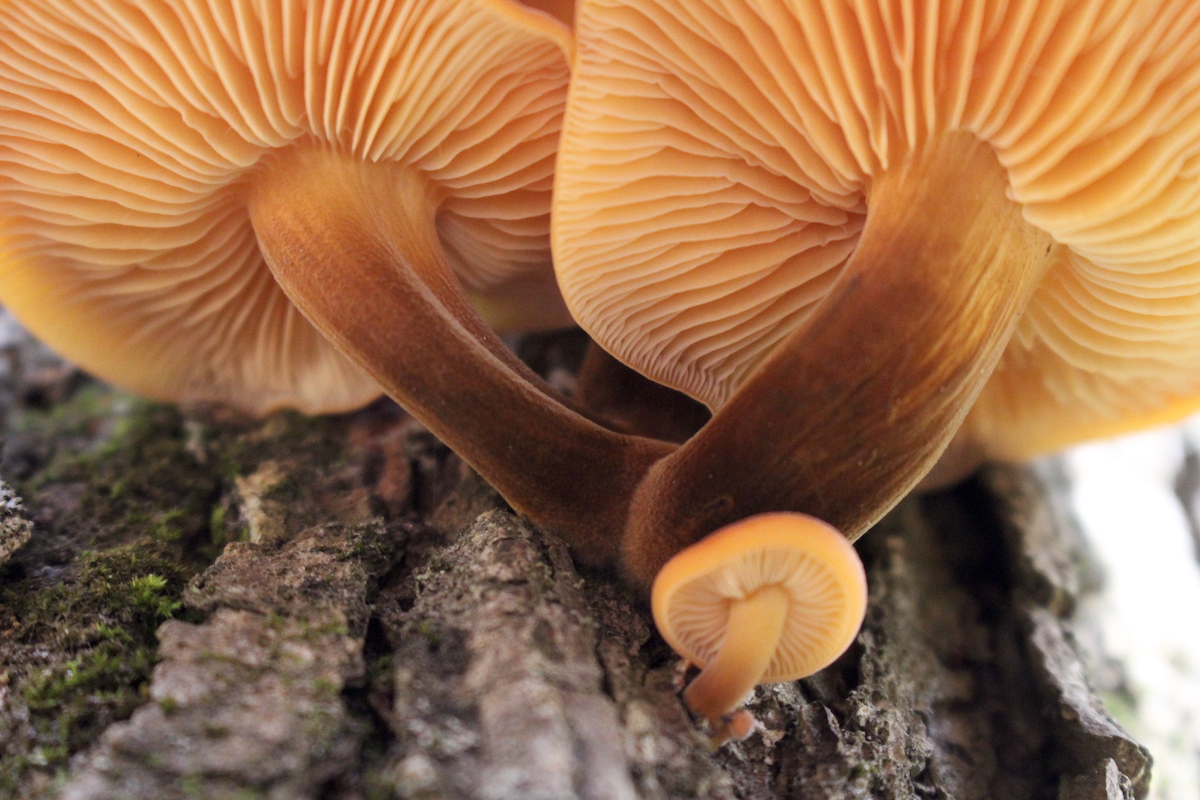
Enoki Mushroom Spore Print
The appearance can be tricky though, as other toxic mushrooms look VERY similar. Once you think you have a wild enoki mushroom, you MUST take a spore print every time.
I can’t stress this enough. A spore print is manditory for this mushroom, and it’s the only way to positively ID it (even if you’re 99% sure of your ID based on appearance alone).
Not only that, you need to sport print EVERY SINGLE MUSHROOM as enoki has been known to grown side by side with toxic look alike species on the same dead decaying piece of wood. Literally only inches apart…
To take a spore print, you need to leave the mushrooms sitting on a piece of paper or aluminum foil for a few hours (or overnight). If you’ve never done this before, I’d suggest reading this guide that explains how to take a mushroom spore print.
You’re expecting a white spore print, and mushrooms with any other color of spore print should be discarded.
Given that, avoid using a white piece of paper as it’ll be very hard to see. I’m using a black piece of construction paper from my kids craft bin, but aluminum foil works well too if that’s all you have.for a few place the mushrooms on a dark surface for a few hours (or overnight).
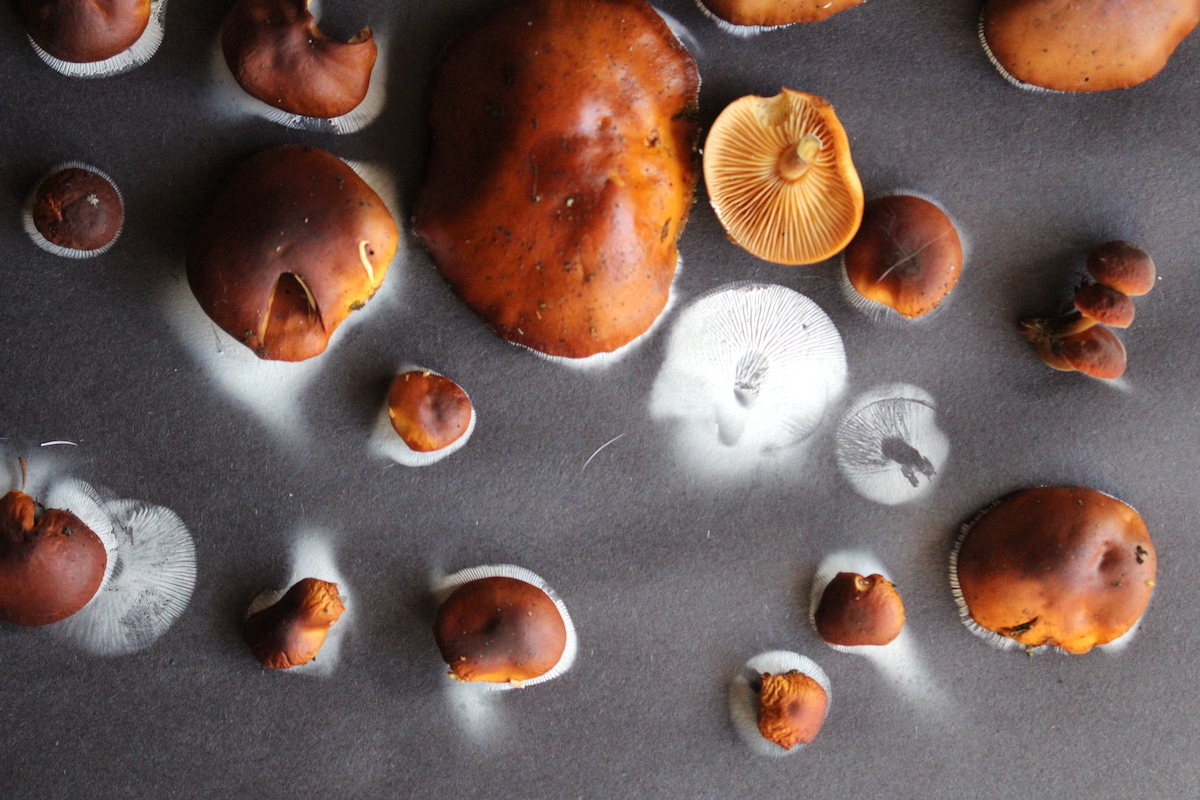
The downside here is that enoki start to deteriorate quickly, and you can see in the mushrooms above they’re already starting to lose their “shiny” caps.
I left these overnight on construction paper, and they’ll still be usable the next day…but they won’t make it two.
Often enoki will shed spores in the wild, and you can actually see the spore print from the mushrooms above on the caps of the ones below. That’s the only real way to get a super fresh one for eating (but again, be careful here, as you need a spore print from every single one…)
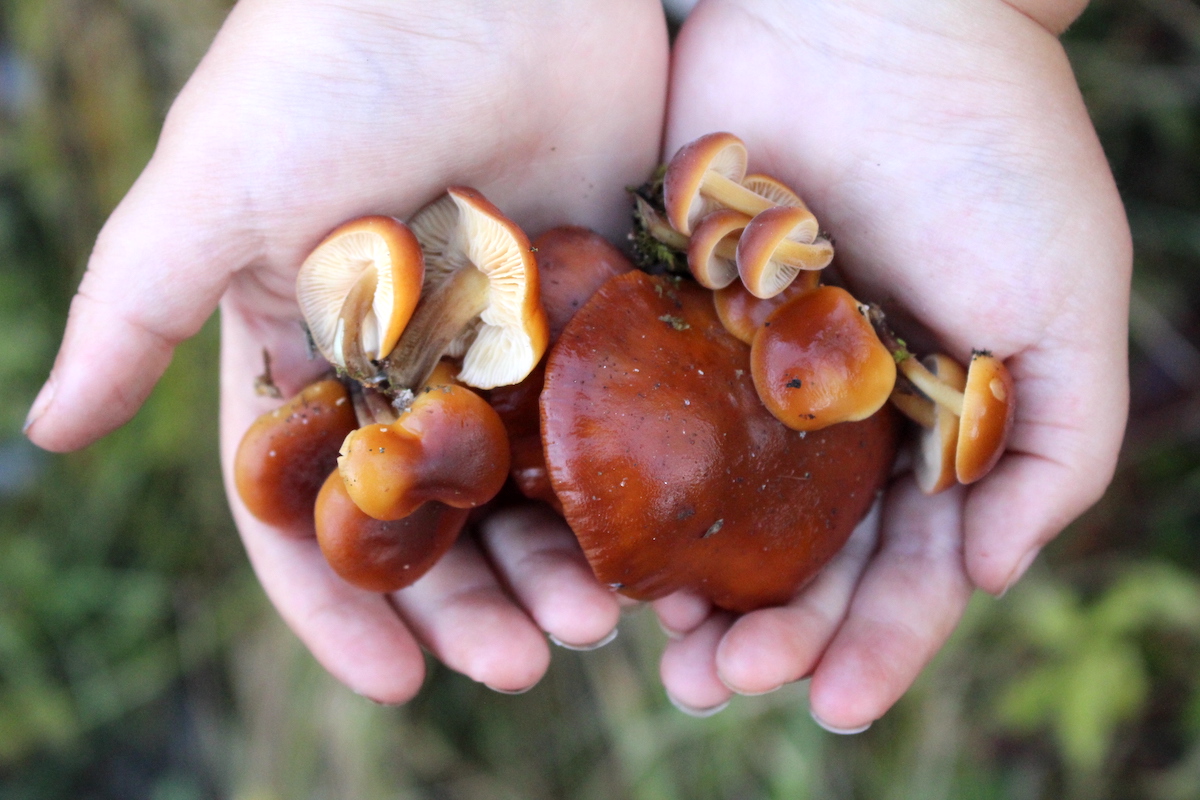
Enoki Mushroom Look-Alikes
There are a lot of “little brown mushrooms” that grow from dead wood. Enoki is one of the few with:
- a shiny/slimy/glossy cap
- Red-ish brown cap (often with lighter edges and a darker center)
- White or yellow-white gills that attach to the stem
- Fuzzy or velvet-y stem that’s darker at the base
- White spore print (most important ID characteristic, not optional)
Those ID characteristics will help ensure that you’ve got true enoki, especially the white spore print part.
As look alikes go, enoki’s closest is an unfortunate one…deadly Galarina (Galerina marginata).
As the name suggests, eating deadly galerina is in fact deadly.
“Initial symptoms after ingestion include severe abdominal pain, vomiting, and diarrhea which may last for six to nine hours. Beyond these symptoms, toxins severely affect the liver which results in gastrointestinal bleeding, a coma, kidney failure, or even death, usually within seven days of consumption.” (Source)
The main differences are deadly galerina and enoki are:
- Galerina has a ring on it’s stem (where the cap was attached before it fully opened), and enoki lacks this ring
- Galerina has a rusty red/brown spore print, while enoki has a white spore print
So the ring is a good ID characteristic in the field, but it can always fall off…so don’t depend on that.
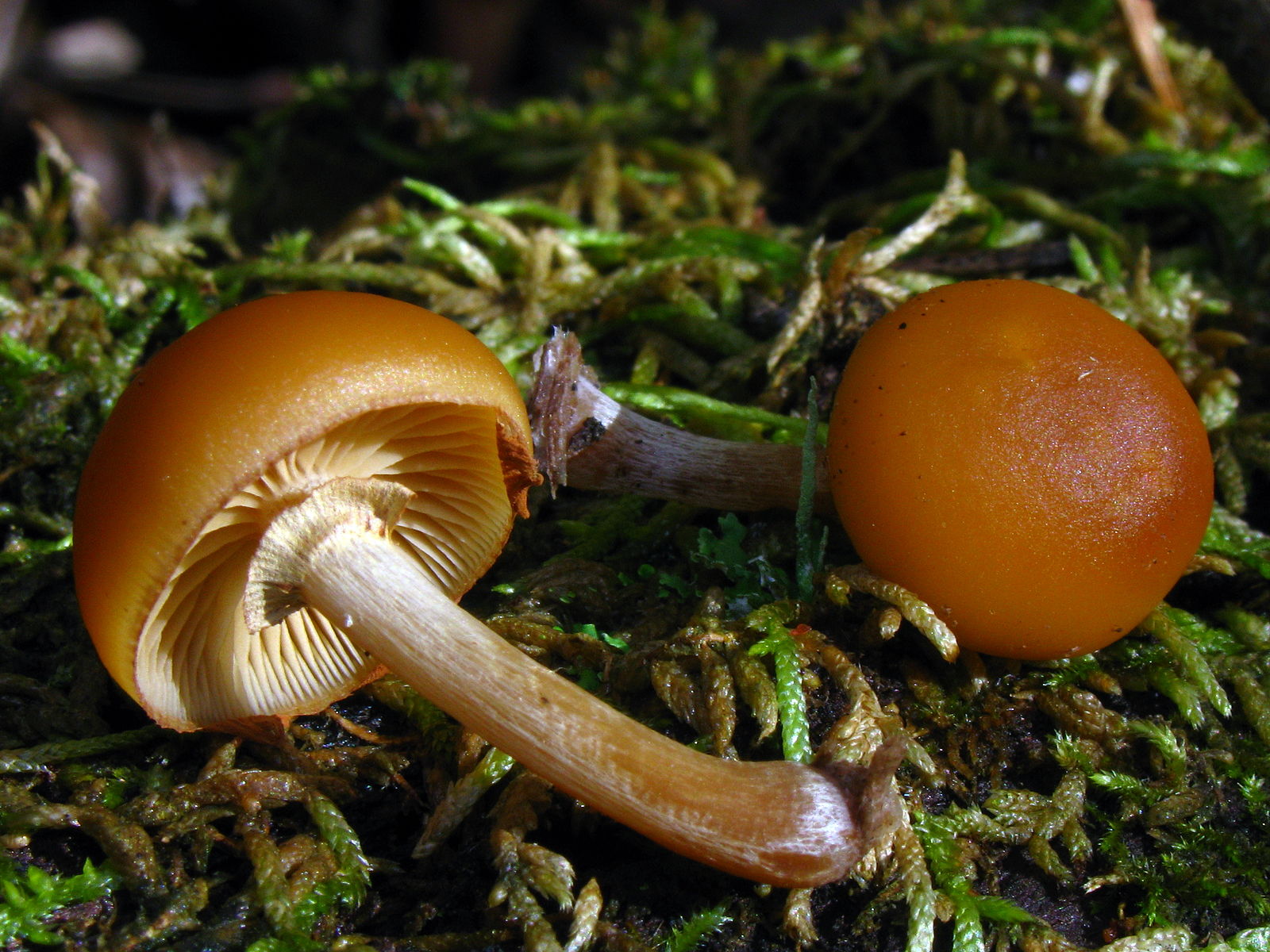
If you do see a ring, definitely leave that one behind. If it lacks a ring, you’ll still need to do a spore print to be sure you’ve found enoki.
Using Wild Enoki Mushrooms
Again, I can’t stress enough the need to properly ID this mushroom. There are many beginner mushrooms with no toxic look alikes that can be safely harvested by the casual forager…
This is not one of them!
Personally, I’d suggest foraging this one with your eyes, enjoying the process of positively ID-ing a wild specimen and then simply leaving them be.
You’ll can knowingly nod and wink when you pass this one by in a park or along a roadside, having a deeper connection with the species without having to risk a simple (potentially deadly) mistake.
That said, if you’re a seasoned mushroom forager and you really feel compelled to harvest wild enoki and bring them into your kitchen, they can be cooked in much the same way as cultivated enoki.
They’re not as delicate as the long stemmed lab grown version, but they’re just as tasty.
- Enoki Mushrooms with Garlic and Scallion Sauce ~ The Woks Life
- Korean Enoki Mushroom Pancakes ~ My Korean Kitchen
- Enoki Mushroom Stir Fry ~ Yummy Mummy Kitchen
- Steamed Enoki Mushrooms ~ China Sichuan Food
- Enoki Mushroom Scrambled Eggs ~ Kikkoman
Foraging Guides
Looking for more foraging guides to keep your basket full?
- 50+ Edible Wild Berries and Fruits
- Poisonous Berries: A Forager’s Guide
- 20+ Wild Edible Roots, Tubers and Bulbs
- 20+ Edible Weeds in Your Garden
- Winter Foraging: 50+ Wild Edibles to Find in the Snow
- Spring Foraging: 20+ Wild Edibles to Forage in Spring
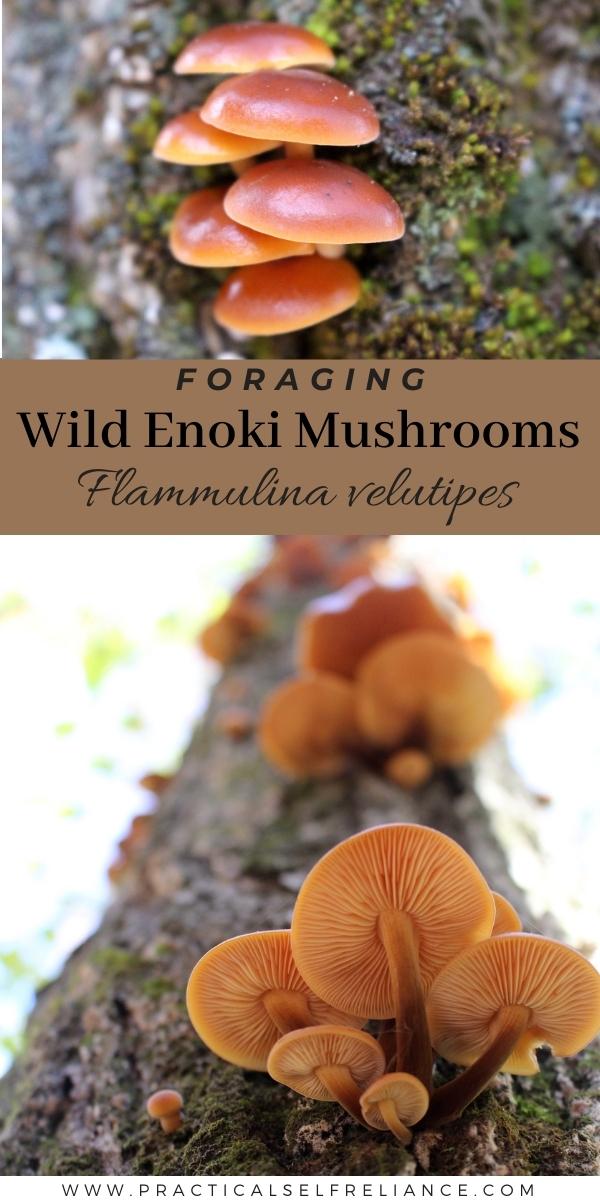

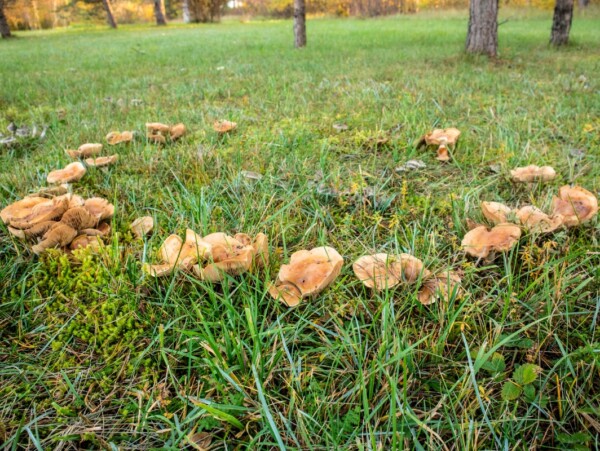
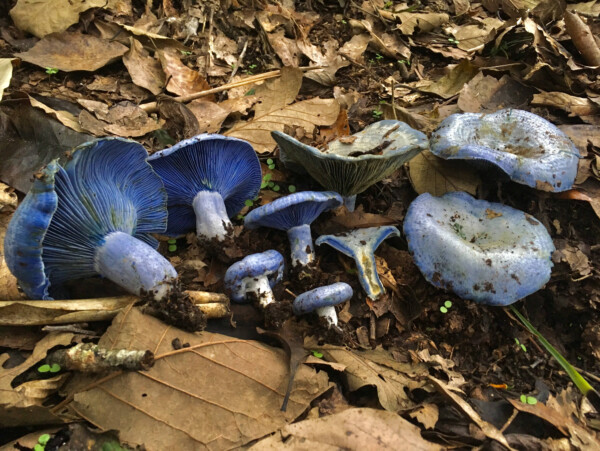
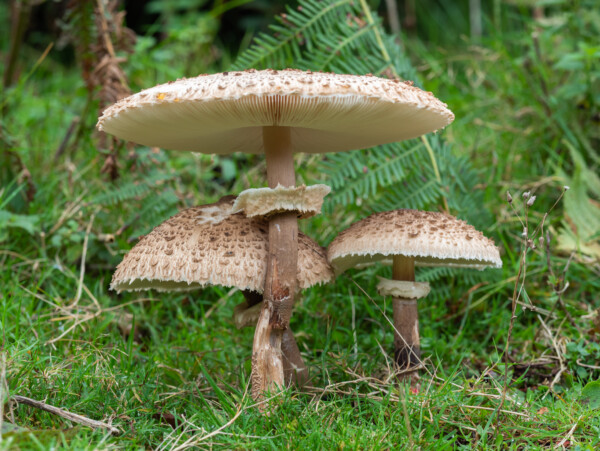










Great Article!
Great article, thanks for the amazing information! One thing I noticed is there is one more difference between enoki and funeral Bell, the funeral Bell does not have velvet on the stalk. So if you don’t an enoki looking mushroom without velvet, leave it be.
You’re welcome. So glad you enjoyed the post.
Thanks – this was very clear and helpful. I found some enoki growing on a rose of Sharon stump. White spore print – did eat — still here! Southwestern PA
You’re very welcome. So glad you’re still here.
Great write up, thanks for sharing! Enoki is a great one and gives good reason to get out there even in winter! As you said, make sure to do that spore print and have fun.